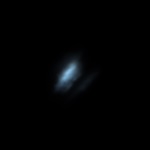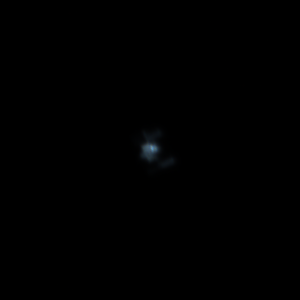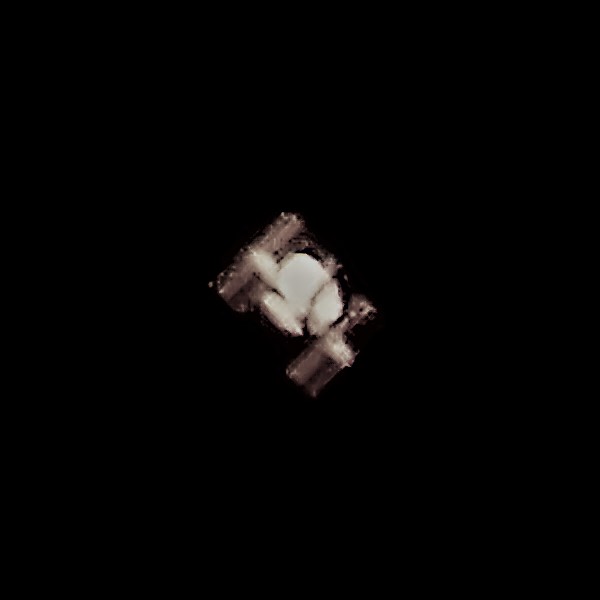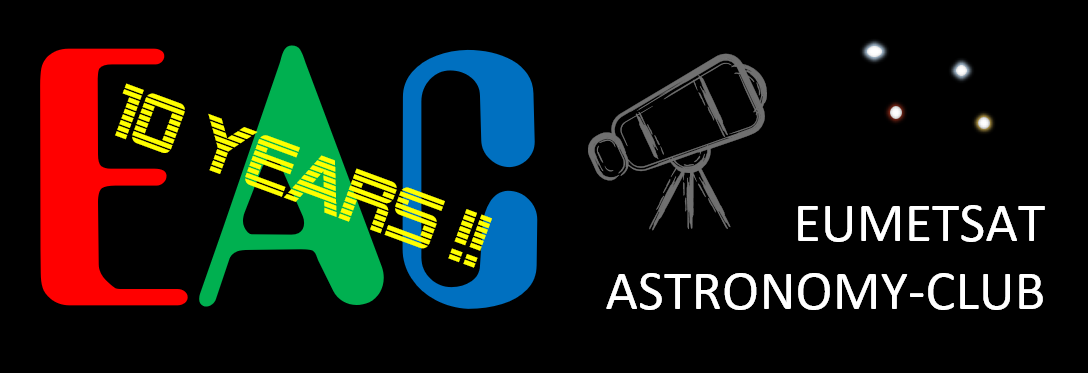I always wanted to have a kind of close-up from the international space station. But how to do?
First – equipment. Since the ISS is moving fast, we need a very short exposure time. Therefore I decided to go with my f/5 Newtonian, which is by far more light-sensitive than my f/16 refractor. The aperture of 6 inch would also allow me to see some details.
Second – weight and balance. With loosened locks, the telescope has to remain in it’s present attitude, without slewing back in any direction.
Third – the camera. Due to the fact, that I would have to track it manually and everything will be tiny and fast, I decided to go with the planetary camera,, an Altair gpcamar0130c, set to video-mode. The resolution is only 1.2 MP, but more than sufficient for ISS. The Pixel-size is 3.75µm.
For the beginning I set the exposure to 5 seconds with no additional read-out-gain (=1), and aimed on Arcturus (a Bot). At this exposure time, the spikes resulting from the struts from the secondary mirror become visible. This is a good help to find the proper focus.
I reduced the exposure time to 5 ms, Arcturus became very faint immediately.
Then checking the Heavens-Above-App. Missed the first pass. Next one at about 23:57, but north of me, coming in from Leo, passing by the Big Dipper, through Cepheus towards Cygnus.
Dry-run, to check dead angles of my mount. I loosened all locking screws from the mount. Put my right eye on the finder and tried to follow the expected path. Due to the arrangement of my setup and the annoying street-light, I could follow the path only from zenith on eastbound. Since the path is not far from Polaris, and I used an aligned equatorial mount, I’d have to constantly move along both axis of the telescope while slewing. While keeping one eye on the finder, it was rather difficult.
Using the finder for coarse orientation, I typically have both eyes open. Right on the finder, left one on the sky directly, because the image in the finder appears 180° rotated. Knowing myself, I will do the exact wrong movement, just relaying on the finder.
Ok, I will not be able to follow the whole path, so let’s ensure, at least the doable part of it is properly recorded.
I turned on recording, using 8bits encoding, the software suggests AVI as output format. I always use the original software from Altair, after some problems in the past with firecapture. For the later processing of the video, I wanted to familiarise a bit more with a software named “PIPP”, so I ensured, that my just recorded file was also readable for PIPP. And it was without problems.
Checking the time again, and noticed, that the alarm-function of heavens-above is not very reliable. ISS just rose above the western horizon. I stepped a few meters back. Yes, there it is!
Ok, Recording on
Find a comfortable stand, moving away the beer can, not to spill it.
Right eye on the finder, left on ISS.
Crosshair not visible, just trying to keep it centred somehow, over the thumb. The cameras sensor is rather small!
Actually, I lost the ISS a couple of times, but could intercept it again. I never check my laptop during this out-of-the-hand-tracking, remembering the old Kenny Rogers Song ‘the gambler’: “There’ll be time enough for counting, when the deal is done.”
My stand becomes more and more uncomfortable the more ISS travels eastbound. Reaching Cygnus, I find myself already standing on the tips of my toes.
Ok, I give up for this round, recording off.
Importing the video into PIPP, Checkbox set to ISS, 1700 frames captured. A lot actually, Process!
The progress-bar fills up, got stuck at 98%, Error! No objects detected! FCK!
Checking the video with a regular video-player. At least from time to time ISS did appear! So where is the bug?
As suggested by the errormessage, I set down the detection threshold from 40 pixels to 10. Since I had the panel open anyways and ISS would not be too big, I decided also to crop the image to 150×150 pixels. This time, 80 frames have been extracted. Checking them, I saw a lot movement in the air. ISS was sometimes very squeezed, sometimes stretched, and sometimes just fine.

I deleted all stretched and squeezed images (I could re-extract them, if needed). 20 images remaining.
Now I was looking for those images showing the most details. The rest I discarded also. 10 images was the final selection, and they all appeared more or less identical. It is very nice, the PIPP always puts the Center of brightness into the centre of the picture, so stacking would be easy.
Second step of reprocessing: Open Fitswork,

File -> Stack, and select the final choice of 10 as input. Add, by using the sigma-function, using just one alignment point (usually I do use 2 for deep-sky). I marked the entire ISS as alignment anchor and GO.
Yes, it appeared a lot better than a single shot. Resizing, sharpening and histogram-alignment, and finally:



1 Comment
Wonderful, and yes, good old and late Kenny Rogers…. I guess my ED80 MIGHT be not appropriate enough for ISS… but the heck. will try as well next time. thanks!